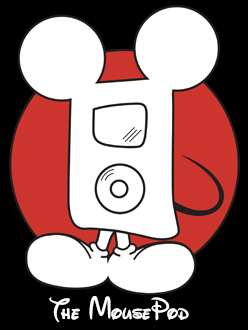The Robber Kitten, directed by David Hand, is another rarely-seen Silly Symphony gem. Ambrose the kitten decides to avoid his bath and run away to become a highwayman. He renames himself Butch and almost immediately runs into Dirty Bill, a real-life bad guy, who has the best theme song ever – written by Frank Churchill (who also composed the score) and sung by Billy Bletcher (aka Pegleg Pete and The Big Bad Wolf).

Water Babies definitely falls into the “cute & charming” camp of 1930’s shorts. Watch it for the cool special effects animation, the often bizarre gags, and Leigh Harline’s score. It’s definitely “of its time” – perhaps cherubic water sprites don’t carry the same weight today as they did 80 years ago. It was popular enough to merit the Merbabies follow-up.

Rags to riches. True love. Makeovers. Musical numbers. Cookie and candy gags. With four out of five of those, you’d have one of any number of successful musical comedies from the ’30s and ’40s. But add the last, and you’ve got Disney magic. Ben Sharpsteen directed this 8-minute short which finds a gingerbread hobo helping a poor sugar cookie become Miss Bonbon so she can compete in the Cookie parade, where a Queen will be chosen. Leigh Harline’s musical numbers propel the story forward (of particular charm are the short vignettes when the suitors present themselves to the Cookie Queen), and the animators make full use of their dazzling technicolor palette.

Who Killed Cock Robin? is a mini-operetta that delighted 1935 audiences. The Academy Award nominated short highlights several caricatures of popular movie stars (particularly “Jenny Wren” as Mae West) and a wall-to-wall Frank Churchill score featuring a hysterical libretto. Some of the characterizations and humor that were considered acceptable at he time are no longer appropriate today, and consequently it’s become more difficult to view this short. However, as an example of storytelling, music and animation style, Who Killed Cock Robin? is still a worthwhile view.

Music Land is a masterpiece. The original concept of the Silly Symphony series was to present music-driven stand-alone stories. By 1935 (and ⅔ of the way into the series) the Disney animation team was hitting their stride – the Silly Symphony shorts were untouchable. But where the preceding shorts told stories using music, Music Land told a story about music. The gap between the two most different types of popular music – Classical and Jazz – was presented, explored, and bridged (quite literally), using a Romeo & Juliet theme. Director Wilfred Jackson and Musical Director Leigh Harline’s vision was a resounding success – and their work on the Mickey Mouse short The Band Concert that same year proved it was no fluke. This is Disney doing what it did best – and it’s still beloved 80 years later.

On the surface, Three Orphan Kittens is another cute cartoon from David Hand and the Disney animator – a series of set pieces without much of a plot. But dig a little deeper, and one can see the writers and the animators flexing their muscles as they prepared for Snow White and the Seven Dwarfs. Audiences back then noticed, and it won the 4th ever Academy Award for Best Animated Short Film (and guess who won the 1st, 2nd, 3rd, 5th, 6th, 7th and 8th?).

Cock O’ The Walk had its New York debut with George Cukor’s Sylvia Scarlett, starring Cary Grant and Katherine Hepburn. Although it’s a charming Disney “funny animal” cartoon, the themes are decidedly adult and the cinematic allusions would have flown over most kids’ heads – even back in 1935. From the Busby Berkeley-esque choreography to the fantastic usage of the popular tune “The Carioca” to the boxing match between the rivals for the heart of the hen, this short will still entertain grown-ups 80 years after its release. Directed by Ben Sharpsteen, the score is split between Frank Churchill and Albert Hay Malotte (this was Malotte’s first Silly Symphony).

It’s Christmas in June! If you’re a fan of Toy Story 3 (and who isn’t?), Broken Toys shows how Disney handled similar material 75 years earlier! Instead of a cowboy doll, the hero of this piece is a sailor, a discarded doll who helps the other toys in the dump (including some caricatures of popular Hollywood figures) get fixed up for a new life. The animation, under the direction of Ben Sharpsteen, is top-notch, and the score by Albert Hay Malotte perfectly underscores the action. Malotte’s song “We’re Gonna Get Outta The Dumps” is a catchy example of 1930’s pop songwriting.

Elmer Elephant perfectly exemplifies the “Golden Age of Animation”. It’s the kind of story you’d find in a children’s book, animated under the direction of Wilfred Jackson with a memorable score by Leigh Harline. The theme of overcoming ridicule and finding your strength is one that would play out many times in Disney films – notably in the next major elephant character tackled by the studio: Dumbo.

Three Little Wolves is another sequel and the third film to feature the Three Little Pigs (and the Big Bad Wolf). While the original Three Little Pigs was seen by many as a response to the Great Depression, this short can be interpreted as a warning about the coming threat from Germany. On its surface, though, it’s still a fun (if somewhat dark) film with a trio of new characters. With an animation team featuring Ferguson, Moore, Larson and Roberts (ably directed by David Hand) and another great Frank Churchill score, Three Little Wolves is more than just a sequel – it’s a wonderful example of Disney storytelling.











